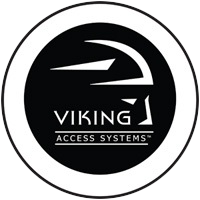Corrosion is a chemical reaction between a metal and its
surroundings during which the metal is oxidized, creating gradual disintegration
of the material.
UL325, which sets the standards for gate operator safety,
stipulates in section 11 the necessary Protection Against Corrosion in a gate
operator or systems as follows; “UL325 11.1 Iron and steel parts shall be
protected against corrosion by enameling, galvanizing, plating, or other
equivalent means, if corrosion of such parts could result in a risk of fire,
electric shock, or injury to persons.
The steel chassis of the Viking Access Systems Gate
operators comply and surpass the requirements set by UL325. Viking Chassis have
a zinc coating uniformly applied to an average of 0.00061in or more on each
surface. Besides the zinc plating provided, Viking Chassis have an extra coat
of organic finish in the form of powder coating. Viking Access Systems has
invested in extra protection not just for the reliability and durability of the
equipment, but to present an aesthetic gate operator that sets new standards
within the industry. Viking has tested the corrosion resistant chassis in
special laboratories where the units are submitted to salt-spray vapor. After
the test we can say that not only do we comply with UL325, but also ASTM B
117-07a the military’s standard for the salt spray test.
Viking Access Systems is committed to providing a quality
product. For more product information feel free to call. (800) 908-0884



